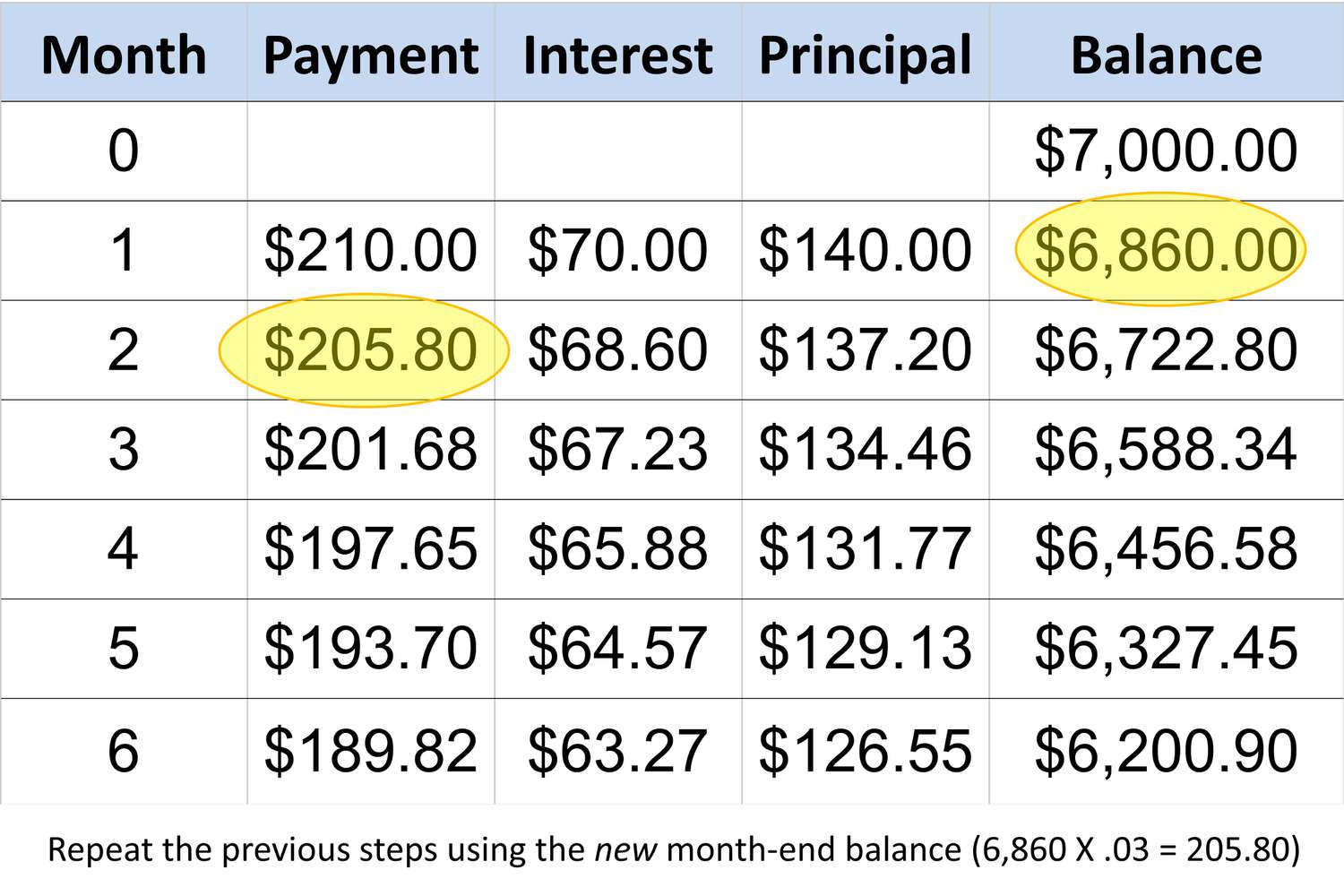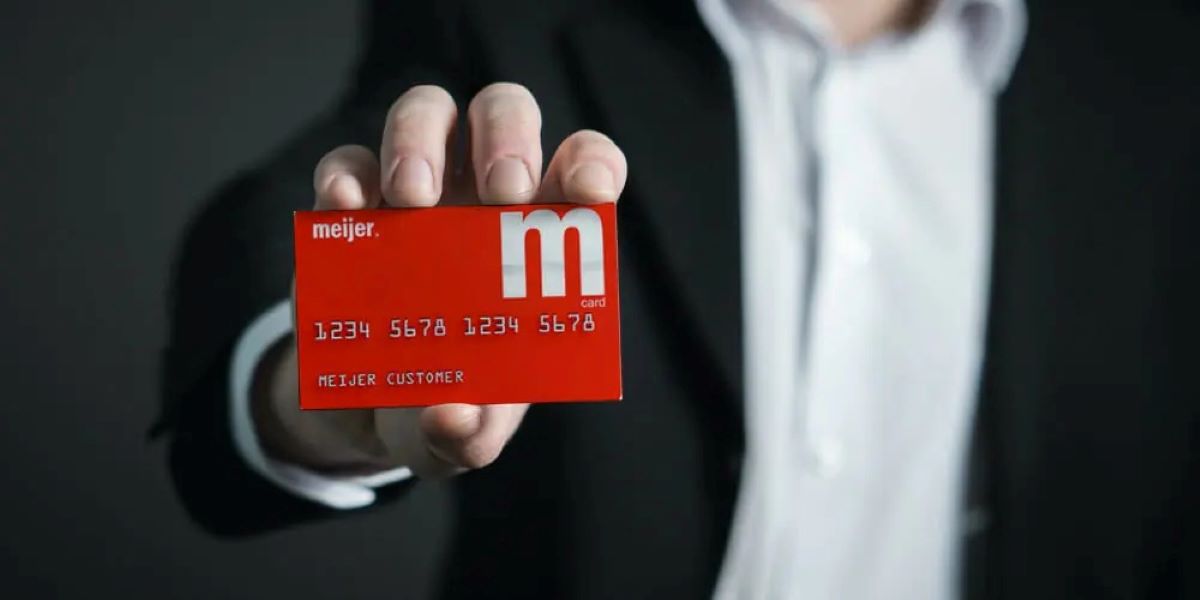Home>Finance>What Is The Minimum Payment On A $10,000 Credit Card


Finance
What Is The Minimum Payment On A $10,000 Credit Card
Modified: March 1, 2024
Learn how to calculate the minimum payment on a $10,000 credit card balance and manage your finances effectively. Understand the impact of minimum payments on your financial health.
(Many of the links in this article redirect to a specific reviewed product. Your purchase of these products through affiliate links helps to generate commission for LiveWell, at no extra cost. Learn more)
Table of Contents
Introduction
Credit cards are convenient financial tools that offer flexibility and purchasing power. However, it's essential to understand the financial responsibilities that come with credit card usage. One crucial aspect of managing a credit card is making regular payments, including the minimum payment required each month. In this article, we will delve into the concept of minimum payments on credit cards, particularly focusing on a $10,000 credit card balance. Understanding the implications of minimum payments is vital for maintaining good financial health and avoiding potential pitfalls associated with credit card debt.
When it comes to credit card balances, many individuals may wonder about the minimum payment required. This is a fundamental aspect of credit card management, as failing to meet the minimum payment can lead to financial penalties and a negative impact on one's credit score. Therefore, gaining a comprehensive understanding of how minimum payments are calculated and the factors influencing them is crucial for responsible credit card usage.
Throughout this article, we will explore the concept of minimum payments, the factors that affect their calculation, and provide insights into managing these payments effectively. Additionally, we will walk through the process of calculating the minimum payment on a ,000 credit card balance, offering practical examples and tips for better financial management.
By the end of this article, readers will have a clear understanding of the importance of minimum payments, the mechanics behind their calculation, and actionable strategies for managing credit card balances effectively. Whether you're new to credit card usage or seeking to enhance your financial knowledge, this guide will equip you with valuable insights into the world of minimum payments and their impact on your financial well-being. Let's embark on this journey to unravel the mysteries of minimum payments and empower ourselves with the knowledge to navigate the realm of credit card finances.
Understanding Minimum Payments
Minimum payments on credit cards represent the lowest amount that cardholders must pay each month to maintain their accounts in good standing. While making the minimum payment by the due date prevents late fees and helps preserve one’s credit score, it is important to recognize that this approach may result in long-term interest costs and prolonged debt repayment. Understanding the dynamics of minimum payments is crucial for making informed financial decisions and effectively managing credit card balances.
When a credit card statement is issued, it outlines the total outstanding balance, the minimum payment due, and the due date. The minimum payment typically consists of a small percentage of the outstanding balance, usually around 1% to 3%, along with any fees and accrued interest. It’s important to note that paying only the minimum amount can lead to substantial interest charges over time, potentially prolonging the repayment period significantly.
Furthermore, credit card issuers are required to disclose the implications of making minimum payments on the cardholder’s statement. This includes the total interest that will be paid and the time it will take to repay the balance if only minimum payments are made. These disclosures aim to provide cardholders with a clear understanding of the long-term consequences of carrying a balance and making minimum payments.
It’s essential for cardholders to recognize that while minimum payments offer short-term relief, they can lead to a cycle of debt if not managed carefully. By understanding the mechanics of minimum payments and their implications, individuals can make informed decisions about their credit card usage and develop strategies to minimize interest costs and accelerate debt repayment.
Throughout this section, we will delve deeper into the factors that influence minimum payments, the long-term consequences of making only minimum payments, and the importance of developing a proactive approach to managing credit card balances. By gaining a comprehensive understanding of minimum payments, readers will be better equipped to navigate the complexities of credit card finances and make informed decisions that align with their financial goals.
Factors Affecting Minimum Payments
Several key factors influence the calculation of minimum payments on credit cards. Understanding these factors is essential for cardholders seeking to manage their credit card balances effectively and minimize the long-term financial implications of carrying a balance. By gaining insights into the elements that contribute to minimum payment calculations, individuals can make informed decisions about their credit card usage and develop strategies to mitigate interest costs and accelerate debt repayment.
- Outstanding Balance: The outstanding balance on a credit card is a primary factor in determining the minimum payment. Typically, the minimum payment is calculated as a percentage of the total balance, often ranging from 1% to 3%. As the outstanding balance fluctuates, so does the minimum payment due.
- Interest Rate: The annual percentage rate (APR) associated with the credit card significantly impacts the minimum payment. Higher interest rates result in larger portions of the minimum payment going towards interest charges, potentially extending the time required to pay off the balance.
- Fees and Penalties: Any applicable fees, such as late payment fees or over-limit fees, are included in the minimum payment calculation. These additional charges can increase the minimum payment due and add to the overall cost of carrying a balance.
- Regulatory Requirements: Credit card issuers are subject to regulatory requirements regarding minimum payments. These requirements dictate how minimum payments are calculated and disclosed to cardholders, ensuring transparency and consumer protection.
- Payment History: A cardholder’s payment history, including any missed or late payments, can impact the minimum payment due. Negative payment history may result in higher minimum payments and can also lead to increased interest rates and penalty fees.
By considering these factors, cardholders can gain a comprehensive understanding of how minimum payments are determined and the implications of carrying a balance on their credit cards. Additionally, being aware of these influences empowers individuals to make proactive decisions regarding their credit card usage, such as paying more than the minimum to reduce interest costs and expedite debt repayment.
Throughout this section, we have explored the various factors that affect minimum payments on credit cards, shedding light on their significance in managing credit card balances. By recognizing these influences, individuals can take control of their financial situation and work towards achieving greater stability and control over their credit card finances.
Calculating the Minimum Payment on a $10,000 Credit Card
When it comes to a $10,000 credit card balance, calculating the minimum payment involves considering various factors that influence the amount due each month. Understanding how the minimum payment is determined is essential for individuals aiming to manage their credit card balances effectively and minimize the long-term financial implications of carrying a substantial balance.
Typically, credit card issuers calculate the minimum payment as a percentage of the outstanding balance, often ranging from 1% to 3%. For a $10,000 balance, this would result in a minimum payment of $100 to $300, depending on the specific percentage used by the card issuer. Additionally, any fees and accrued interest would contribute to the total minimum payment due.
It’s important to recognize that making only the minimum payment on a $10,000 credit card balance can lead to significant interest costs over time, potentially prolonging the repayment period and increasing the overall amount paid. For instance, if the card carries an APR of 18%, making minimum payments could extend the repayment timeline by several years and result in substantial interest expenses.
Cardholders should also be mindful of any regulatory requirements that dictate how minimum payments are calculated and disclosed. These requirements aim to ensure transparency and consumer protection, providing individuals with clear information about the implications of making only minimum payments on their credit card balances.
By gaining insights into the process of calculating the minimum payment on a $10,000 credit card balance, individuals can make informed decisions about their repayment strategy. It’s crucial to assess the long-term implications of carrying a substantial balance and making only the minimum payments, as this approach can lead to prolonged debt and increased interest costs.
Ultimately, understanding the mechanics of minimum payments on a $10,000 credit card balance empowers individuals to take proactive steps in managing their credit card finances. By considering the various factors that influence minimum payments and the implications of carrying a significant balance, cardholders can develop strategies to minimize interest expenses, accelerate debt repayment, and work towards achieving greater financial stability.
By delving into the process of calculating the minimum payment on a $10,000 credit card balance, individuals can gain valuable insights into the dynamics of credit card finances and make informed decisions that align with their financial goals and priorities.
Tips for Managing Minimum Payments
Effectively managing minimum payments on credit cards is crucial for maintaining financial stability and minimizing the long-term impact of carrying a balance. By implementing proactive strategies, individuals can navigate the complexities of minimum payments and work towards optimizing their credit card repayment approach. Here are several valuable tips for managing minimum payments:
- Pay More Than the Minimum: Whenever possible, strive to pay more than the minimum amount due. By allocating additional funds towards the credit card balance, individuals can reduce the outstanding amount and minimize interest costs over time.
- Create a Repayment Plan: Develop a structured repayment plan to systematically reduce the credit card balance. Setting specific goals and timelines for debt reduction can provide a clear roadmap for managing minimum payments effectively.
- Avoid New Charges: While focusing on reducing the existing balance, refrain from making additional charges on the credit card. Minimizing new purchases can help prevent the accumulation of further debt and facilitate a more manageable repayment process.
- Explore Balance Transfer Options: Consider transferring the balance to a credit card with a lower interest rate, enabling more efficient debt repayment. However, it’s essential to assess any associated transfer fees and the long-term benefits of this strategy.
- Seek Financial Guidance: If struggling to manage minimum payments and credit card balances, consider seeking advice from financial professionals or credit counseling services. These experts can offer personalized guidance and strategies for effective debt management.
- Monitor Credit Card Statements: Regularly review credit card statements to ensure accuracy and track the progress of debt reduction. Monitoring statements can also help identify any unauthorized charges or errors that may impact the repayment process.
- Prioritize High-Interest Balances: If managing multiple credit card balances, prioritize paying off the cards with the highest interest rates. This approach can minimize overall interest costs and expedite the journey towards debt freedom.
By implementing these tips, individuals can take proactive steps towards managing minimum payments effectively and working towards reducing their credit card balances. Developing a strategic approach to credit card repayment and maintaining financial discipline can lead to improved long-term financial well-being and a reduced reliance on minimum payments.
Ultimately, by incorporating these strategies into their financial management approach, individuals can gain greater control over their credit card balances and work towards achieving a more secure and stable financial future.
Conclusion
Understanding the dynamics of minimum payments on credit cards is essential for individuals seeking to navigate the complexities of credit card finances and make informed decisions about their repayment strategies. With a clear grasp of the factors influencing minimum payments and the implications of carrying a balance, individuals can take proactive steps towards managing their credit card balances effectively and minimizing the long-term financial impact of debt.
Throughout this article, we have explored the concept of minimum payments, shedding light on their significance in maintaining good financial standing and preserving credit scores. By recognizing the factors that influence minimum payments, such as outstanding balances, interest rates, fees, and payment history, individuals can develop a comprehensive understanding of the mechanics behind minimum payment calculations and make informed choices about their credit card usage.
Furthermore, delving into the process of calculating the minimum payment on a $10,000 credit card balance has provided valuable insights into the implications of carrying a substantial balance and making only minimum payments. By recognizing the potential long-term costs and the impact on debt repayment timelines, individuals can develop proactive strategies to minimize interest expenses and work towards achieving greater financial stability.
Additionally, the tips for managing minimum payments offer actionable guidance for individuals aiming to optimize their credit card repayment approach. By implementing strategies such as paying more than the minimum, creating structured repayment plans, and prioritizing high-interest balances, individuals can take control of their credit card finances and work towards reducing their outstanding balances effectively.
Ultimately, by integrating these insights into their financial management approach, individuals can navigate the realm of minimum payments with confidence and develop strategies to achieve greater financial stability. By understanding the implications of minimum payments and taking proactive steps towards managing credit card balances, individuals can work towards a more secure and stable financial future, free from the burden of prolonged debt and excessive interest costs.
As we conclude this exploration of minimum payments on credit cards, it is our hope that readers have gained valuable insights and actionable strategies for managing their credit card balances effectively. By leveraging this knowledge, individuals can make informed decisions about their credit card usage and work towards achieving greater financial well-being and stability.














